Back to river stories
It's been a while since I last posted... well yesterday, but it's been a while since I posted about an actual day out on the water. So let this be it, and it will also be the last post of February I should think.
Today the canoe club was running a trip down the River Crake. However after talking to the contact for the trip and hearing who had contacted him about it something else more interesting was definitely on the cards, especially as the past week had been the wettest for a while. So I was dropped off at Fulwood Leisure Centre and from there I scrounged a lift up the motorway to the Kent. Here we looked at the lower stretches of the river and to be honest it looked a medium-low level. I was a bit disappointed that we were going to be getting on this river seen as I have already done it three times this season and it had been at better levels than this tourist level! However, the group had other ideas, so it was back to the M6 and off at the next junction to head for the Upper Lune.
Once changed and a shuttle organised we started moving boats from the side of the B6257, down the small lane, under the viaduct and to the small shingle beach by the river right bank. It wasn't an overly long carry, however it was slightly inconvenient; if there had been a bit more water you could actually paddle down to the put in for the Lune as Low Gill runs parallel with the road.
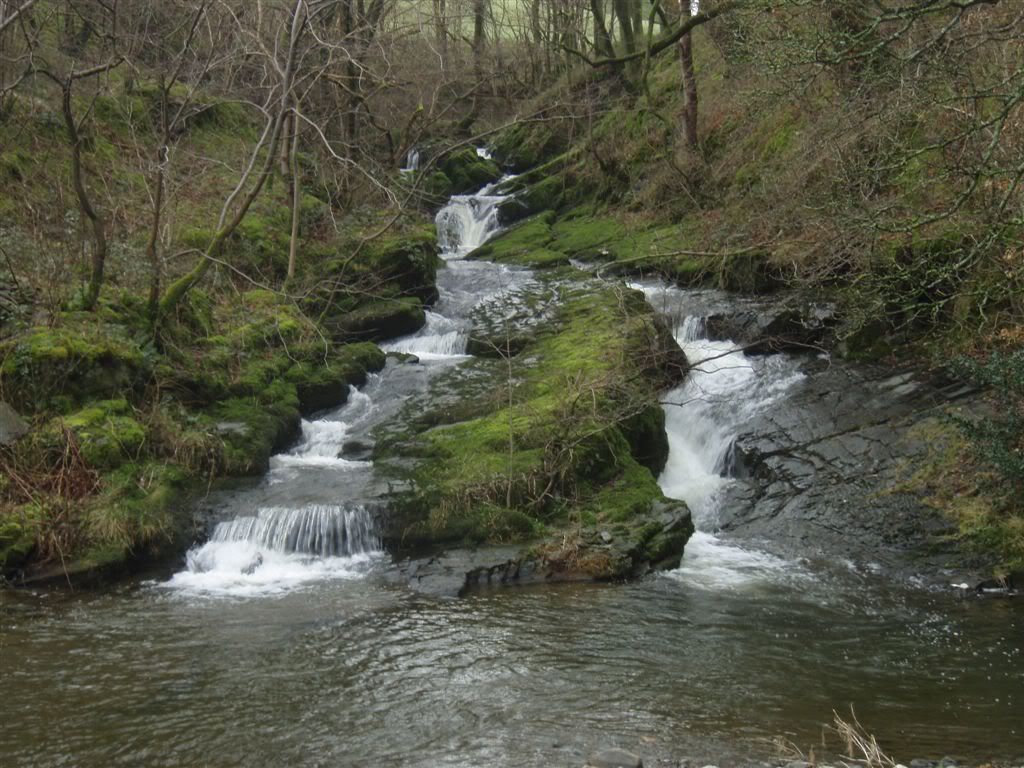 Low Gill in extremely low water, with a bit of extra water this "gives an entertaining start to the Lune" [White Water Lake District, Stuart Miller].
Low Gill in extremely low water, with a bit of extra water this "gives an entertaining start to the Lune" [White Water Lake District, Stuart Miller].
Once the group of eight had been reunited after the shuttle the briefest of briefings were had. It was a club trip so formalities had to be done for it all to be kosher. At this point I actually realised I was the most qualified paddler on the river. With being over 18 (just) and the only qualified BCU Coach (Level 2), I was therefore responsible for near enough everything that would happen on the river. This is slightly daunting as 40% of the group were actually older than myself. However, it was never a major problem as most of the group were experience paddlers with sound skills and knowledge of the river.
The Upper Lune is one of the classic stretches of white water in the area with many class 3 gorges that are spaced fairly close together. This gives the river added depth as it is not just a case of whacking out endless paddle strokes on the flat sections to get to the next point of interest. However, these gorges, by nature are filled with lovely boils and swirly eddy lines. These in themselves are not much of a problem, however when you are trying to get a good photo whilst bobbing around and cruising around an eddy with one hand on your paddle and a brand new camera in the other it adds an extra challenge to the day.
Like most of northern England the river is littered with reminders of our past industries and engineering dominance. At many points the river is crossed by an ancient viaduct, iron in construction supported by towering stone pillars, that is now disused. It is sad really, and sometimes upsetting to see such feats of engineering laid to waste with little purpose, but to remind those of us who visit the places they lay of what Britain used to be.
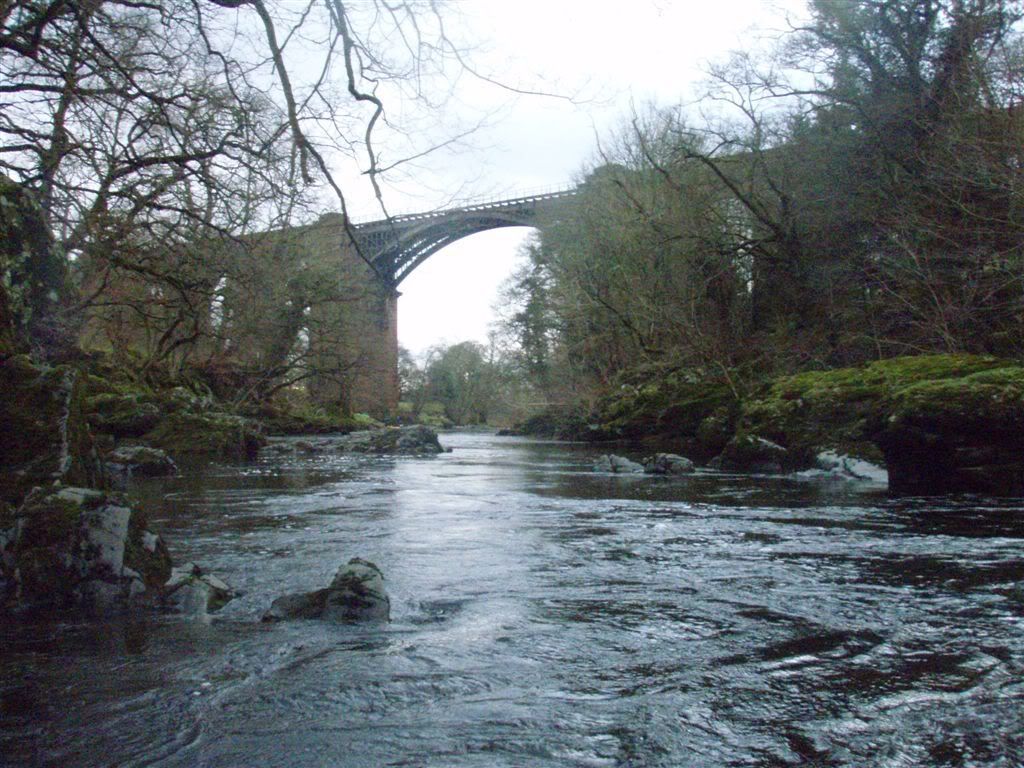 The disused viaduct which runs, several times, over the Lune. This particular section of the viaduct is a popular haunt for Outdoor Centres.
The disused viaduct which runs, several times, over the Lune. This particular section of the viaduct is a popular haunt for Outdoor Centres.
There are two notable rapids on the river and one of these is known as Pillar Box, or to other paddlers 'the-one-with-the-rock-in-the-way'. When I first descended this river I took a swim at this point and that was over two years ago, when I had little experience and come to think of it this river, at the time, was the biggest undertaking I had taken in my paddling career. Today, I ran the rapid first, laying down the line for others to follow. Luckily, I managed to hit my line and broke out sweatily lower down to set up camera and take some pictures of the rest of the group.
The next notable rapid on this section of river is known as the Strid, as are many rapids in the surrounding area. Basically any rapid known by the name Strid can be characterised by its narrow nature and the one on the Lune is no different. The river, that has probably been averaging 15-20 meters narrows to just a few meters and therefore the water is naturally powerful, full of boils and aerated. All the group got out to inspect the constriction, as once you've committed yourself to your line there is no chance of breaking out or stopping if your way is blocked by a lump of wood.
Once through the Strid the river continues to wind it's way through more bedrock gorges until eventually you come to the end, marked by Killington Bridge. It may be added that in this last stretch there is the added danger of several strainers in the form of two pinned trees. To the best of my knowledge these have been in the river for a considerable period of time and in higher flows can pose a great difficult to many paddlers as was seen on the 3rd January.
More pictures can be found here.
Today the canoe club was running a trip down the River Crake. However after talking to the contact for the trip and hearing who had contacted him about it something else more interesting was definitely on the cards, especially as the past week had been the wettest for a while. So I was dropped off at Fulwood Leisure Centre and from there I scrounged a lift up the motorway to the Kent. Here we looked at the lower stretches of the river and to be honest it looked a medium-low level. I was a bit disappointed that we were going to be getting on this river seen as I have already done it three times this season and it had been at better levels than this tourist level! However, the group had other ideas, so it was back to the M6 and off at the next junction to head for the Upper Lune.
Once changed and a shuttle organised we started moving boats from the side of the B6257, down the small lane, under the viaduct and to the small shingle beach by the river right bank. It wasn't an overly long carry, however it was slightly inconvenient; if there had been a bit more water you could actually paddle down to the put in for the Lune as Low Gill runs parallel with the road.
 Low Gill in extremely low water, with a bit of extra water this "gives an entertaining start to the Lune" [White Water Lake District, Stuart Miller].
Low Gill in extremely low water, with a bit of extra water this "gives an entertaining start to the Lune" [White Water Lake District, Stuart Miller].Once the group of eight had been reunited after the shuttle the briefest of briefings were had. It was a club trip so formalities had to be done for it all to be kosher. At this point I actually realised I was the most qualified paddler on the river. With being over 18 (just) and the only qualified BCU Coach (Level 2), I was therefore responsible for near enough everything that would happen on the river. This is slightly daunting as 40% of the group were actually older than myself. However, it was never a major problem as most of the group were experience paddlers with sound skills and knowledge of the river.
The Upper Lune is one of the classic stretches of white water in the area with many class 3 gorges that are spaced fairly close together. This gives the river added depth as it is not just a case of whacking out endless paddle strokes on the flat sections to get to the next point of interest. However, these gorges, by nature are filled with lovely boils and swirly eddy lines. These in themselves are not much of a problem, however when you are trying to get a good photo whilst bobbing around and cruising around an eddy with one hand on your paddle and a brand new camera in the other it adds an extra challenge to the day.
Like most of northern England the river is littered with reminders of our past industries and engineering dominance. At many points the river is crossed by an ancient viaduct, iron in construction supported by towering stone pillars, that is now disused. It is sad really, and sometimes upsetting to see such feats of engineering laid to waste with little purpose, but to remind those of us who visit the places they lay of what Britain used to be.
 The disused viaduct which runs, several times, over the Lune. This particular section of the viaduct is a popular haunt for Outdoor Centres.
The disused viaduct which runs, several times, over the Lune. This particular section of the viaduct is a popular haunt for Outdoor Centres.There are two notable rapids on the river and one of these is known as Pillar Box, or to other paddlers 'the-one-with-the-rock-in-the-way'. When I first descended this river I took a swim at this point and that was over two years ago, when I had little experience and come to think of it this river, at the time, was the biggest undertaking I had taken in my paddling career. Today, I ran the rapid first, laying down the line for others to follow. Luckily, I managed to hit my line and broke out sweatily lower down to set up camera and take some pictures of the rest of the group.
The next notable rapid on this section of river is known as the Strid, as are many rapids in the surrounding area. Basically any rapid known by the name Strid can be characterised by its narrow nature and the one on the Lune is no different. The river, that has probably been averaging 15-20 meters narrows to just a few meters and therefore the water is naturally powerful, full of boils and aerated. All the group got out to inspect the constriction, as once you've committed yourself to your line there is no chance of breaking out or stopping if your way is blocked by a lump of wood.
Once through the Strid the river continues to wind it's way through more bedrock gorges until eventually you come to the end, marked by Killington Bridge. It may be added that in this last stretch there is the added danger of several strainers in the form of two pinned trees. To the best of my knowledge these have been in the river for a considerable period of time and in higher flows can pose a great difficult to many paddlers as was seen on the 3rd January.
More pictures can be found here.
Good lines, stay safe and see you on the wet stuff...
Iain




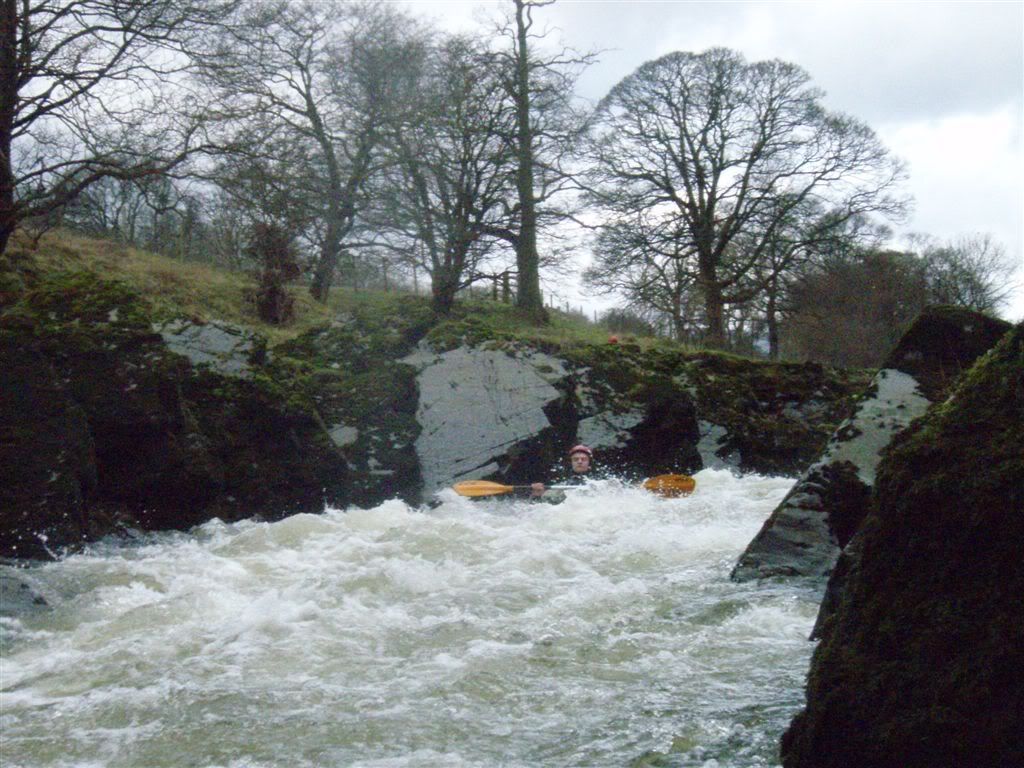
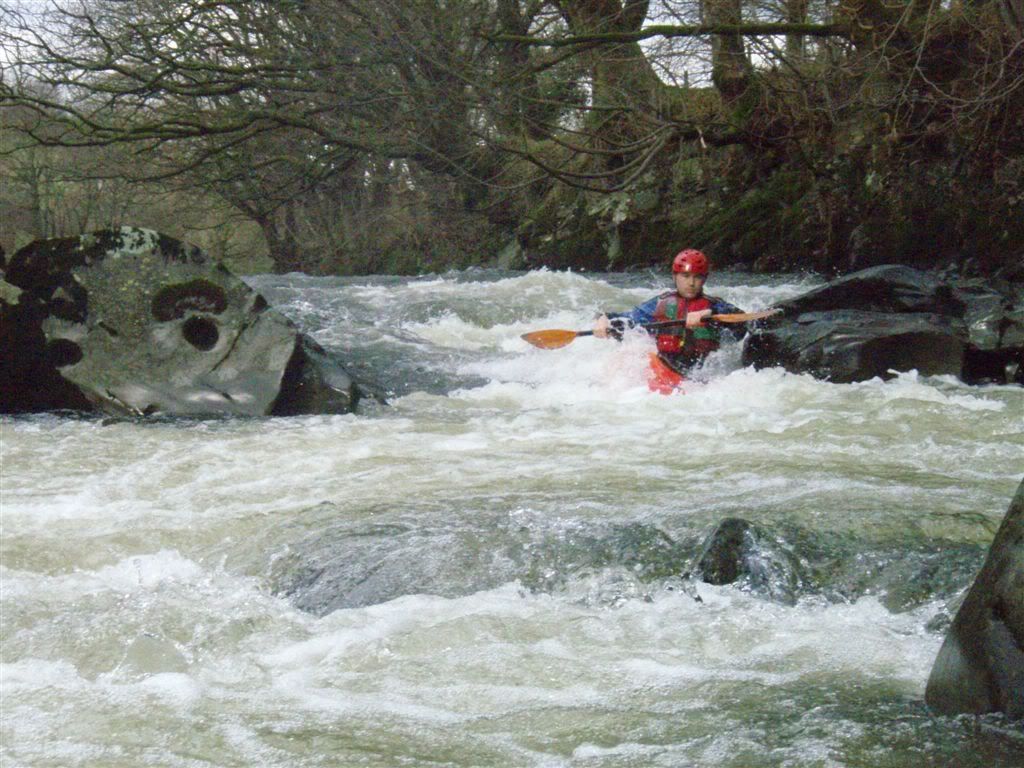


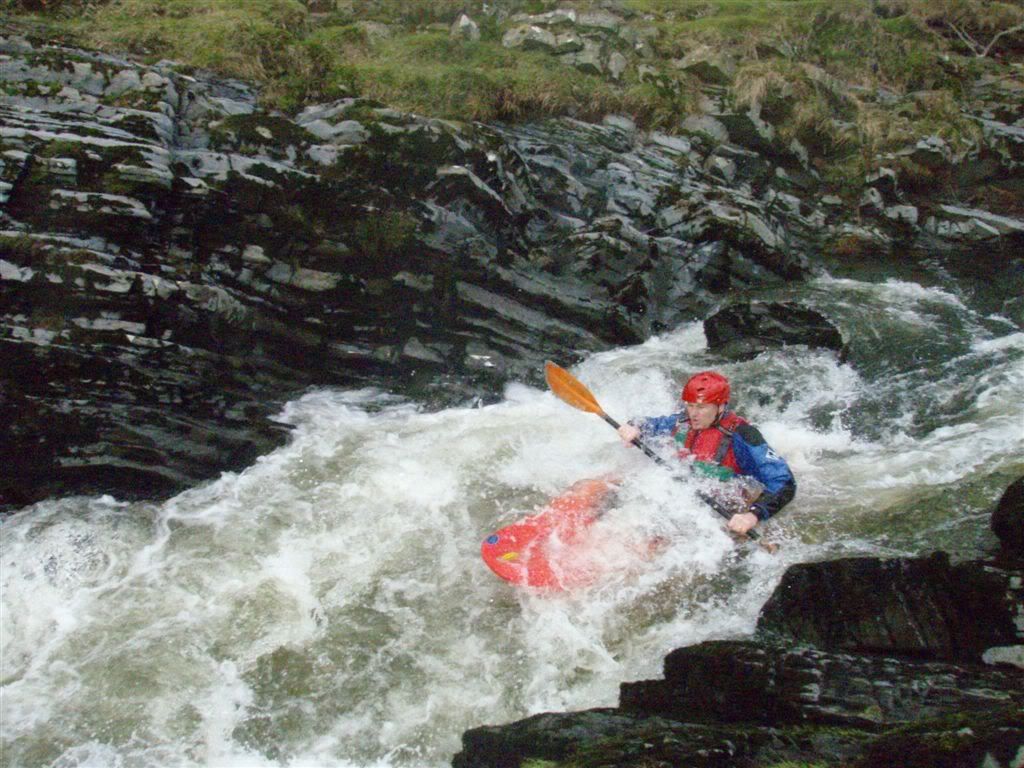
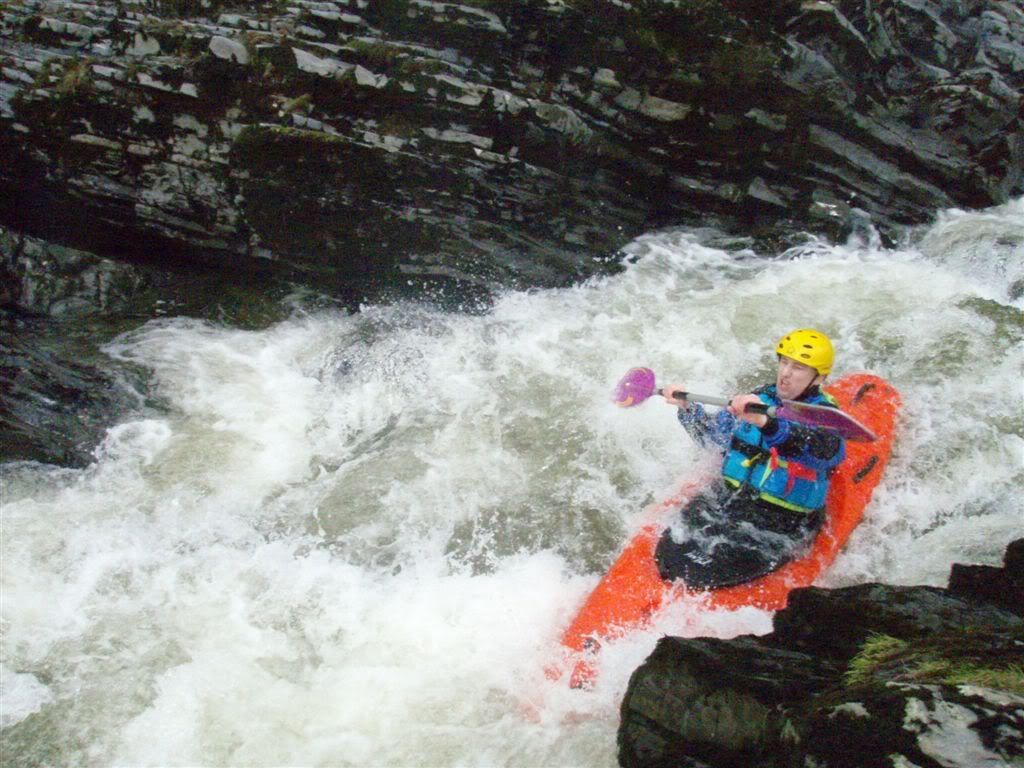
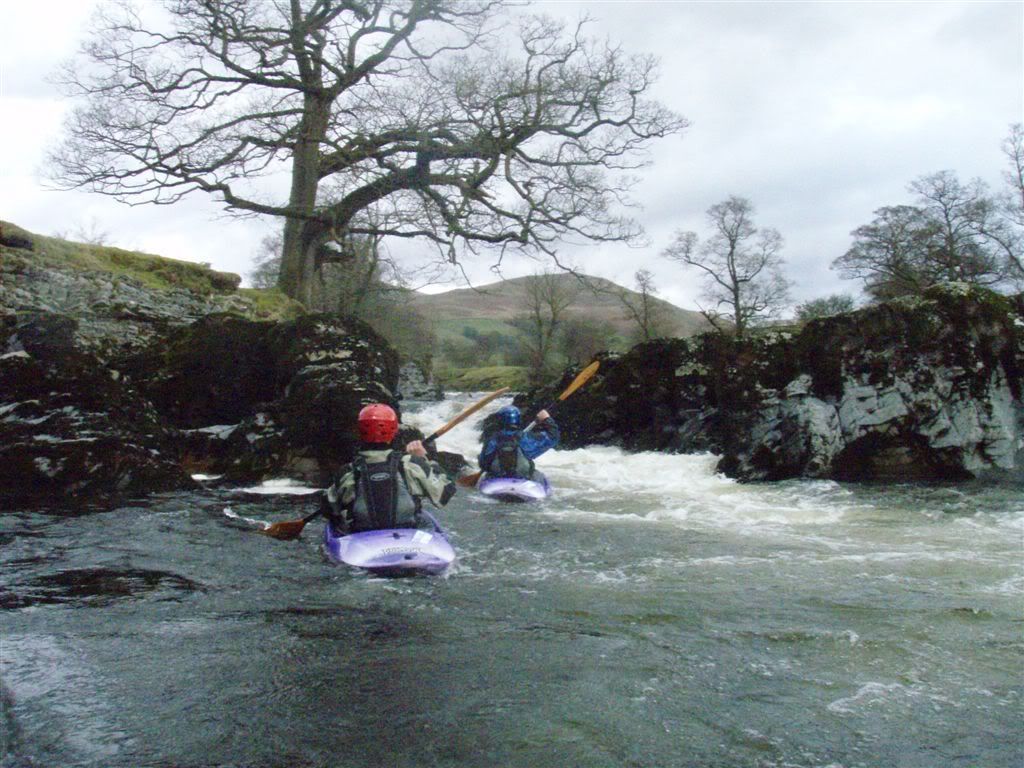

No comments:
Post a Comment